BM-30 Smerch on:
[Wikipedia]
[Google]
[Amazon]
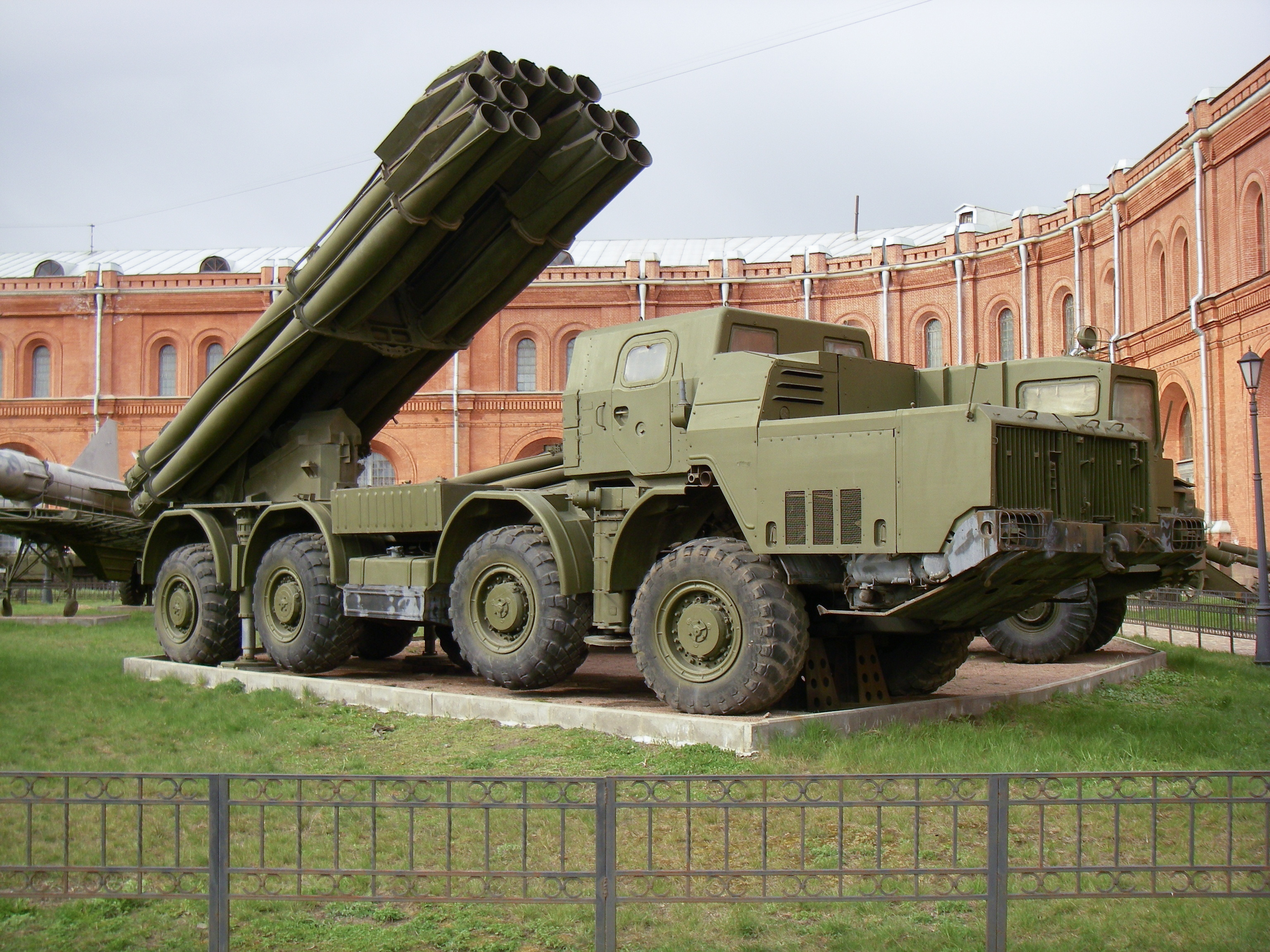


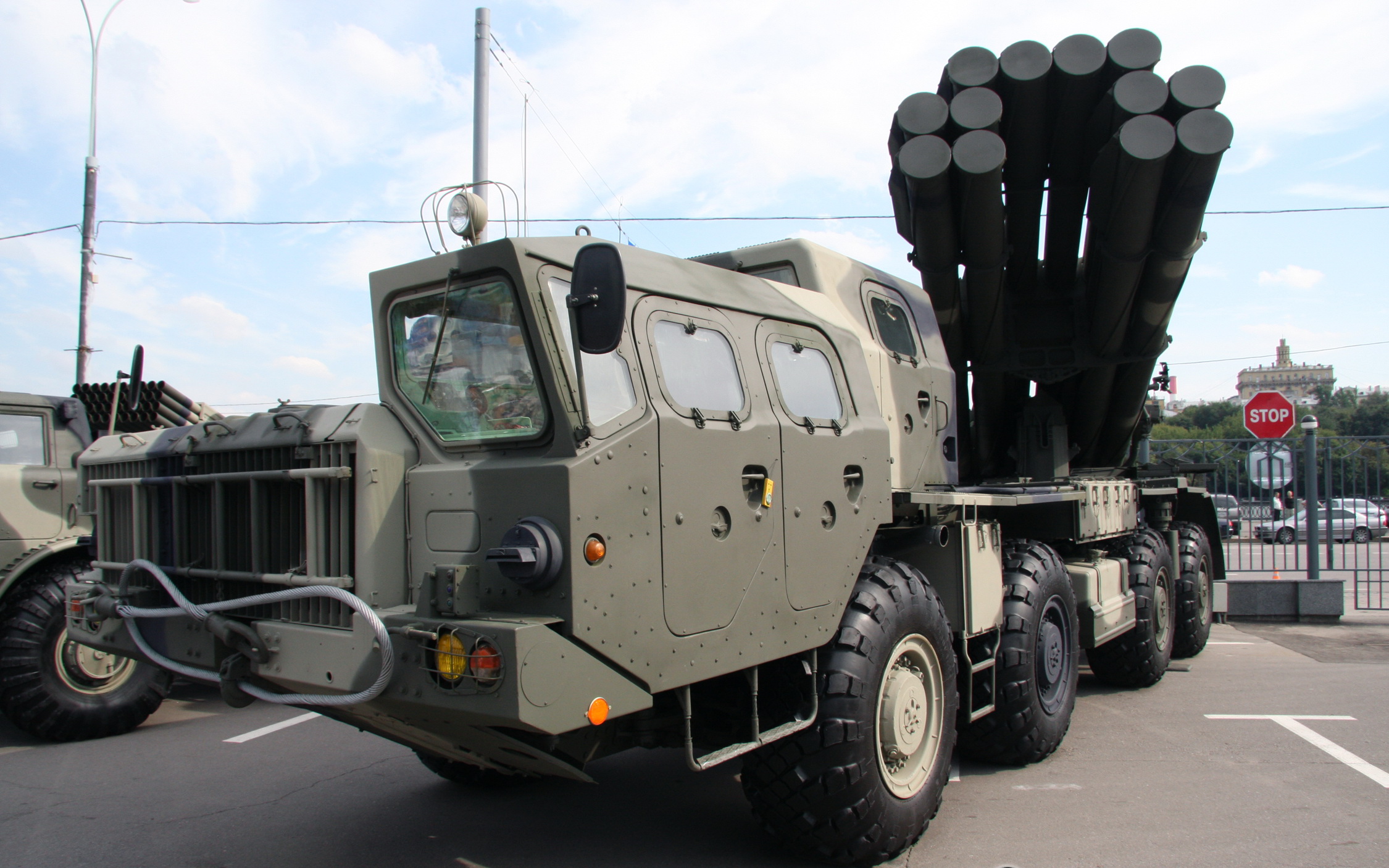 The BM-30 ''Smerch'' ( rus, Смерч, "tornado", "whirlwind"), 9K58 Smerch or 9A52-2 Smerch-M is a heavy self-propelled 300 mm
The BM-30 ''Smerch'' ( rus, Смерч, "tornado", "whirlwind"), 9K58 Smerch or 9A52-2 Smerch-M is a heavy self-propelled 300 mm



 The BM-30 ''Smerch'' ( rus, Смерч, "tornado", "whirlwind"), 9K58 Smerch or 9A52-2 Smerch-M is a heavy self-propelled 300 mm
The BM-30 ''Smerch'' ( rus, Смерч, "tornado", "whirlwind"), 9K58 Smerch or 9A52-2 Smerch-M is a heavy self-propelled 300 mm multiple rocket launcher
A multiple rocket launcher (MRL) or multiple launch rocket system (MLRS) is a type of rocket artillery system that contains multiple launchers which are fixed to a single platform, and shoots its rocket ordnance in a fashion similar to a volle ...
designed in the Soviet Union
The Soviet Union,. officially the Union of Soviet Socialist Republics. (USSR),. was a transcontinental country that spanned much of Eurasia from 1922 to 1991. A flagship communist state, it was nominally a federal union of fifteen national ...
. The system is intended to defeat personnel, armored, and soft targets in concentration areas, artillery batteries, command posts and ammunition depots. It was designed in the early 1980s and entered service in the Soviet Army
uk, Радянська армія
, image = File:Communist star with golden border and red rims.svg
, alt =
, caption = Emblem of the Soviet Army
, start_date ...
in 1989. When first observed by the West in 1983, it received the code MRL 280mm M1983. It continues in use by Russia; a program to replace it with the 9A52-4 Tornado
The Tornado is a family of related multiple rocket launchers developed by NPO Splav for the Russian Ground Forces. Variants of the system, which include the Tornado-G and Tornado-S models, have different capabilities and different battlefield role ...
began in 2018.
Operational history
The first confirmed combat uses of the Smerch were in two war zones in 2014. Syrian military forces used the system against rebel forces during the Syrian civil war, including in fighting inJobar
Jobar ( ar, جَوْبَر, Jawbar) also spelled Jawbar, Jober or Joubar, is a municipality of the Syrian capital Damascus. A once historical village on the outskirts of Damascus, it is now a suburb of the capital city. It lies 2 km northeas ...
. It was also used by Russia-backed militants to deliver explosive and cluster munitions to Ukrainian military positions and likewise by the Ukrainian Army. Several have been seen in use by pro-Russian rebels. The Russian Ground Forces
The Russian Ground Forces (russian: Сухопутные войска �ВSukhoputnyye voyska V}), also known as the Russian Army (, ), are the land forces of the Russian Armed Forces.
The primary responsibilities of the Russian Ground Forces ...
used the BM-30 in Syria in October 2015 during the Russian intervention in Syria
{{Infobox military conflict
, partof = the foreign involvement in the Syrian civil war, and the military intervention against ISIL
, image =
, image_size =
, border =
, caption = To ...
.
During the 2020 Nagorno-Karabakh conflict
The Second Nagorno-Karabakh War was an armed conflict in 2020 that took place in the disputed region of Nagorno-Karabakh and Armenian-occupied territories surrounding Nagorno-Karabakh, the surrounding territories. It was a major escalation of ...
, Armenia and Azerbaijan both targeted the other country's territory with Smerch rockets.
Smerch rockets were fired from Belgorod
Belgorod ( rus, Белгород, p=ˈbʲeɫɡərət) is a city and the administrative center of Belgorod Oblast, Russia, located on the Seversky Donets River north of the border with Ukraine. Population: Demographics
The population of Be ...
in the 2022 Russian Invasion of Ukraine
On 24 February 2022, in a major escalation of the Russo-Ukrainian War, which began in 2014. The invasion has resulted in tens of thousands of deaths on both sides. It has caused Europe's largest refugee crisis since World War II. An ...
. As Smerch rockets are a Multiple Launch Rocket System, using these to attack a densely populated area of civilians caused some to call the action a war crime. The Human Rights Watch also claims that Smerch cluster munitions 9M55K (containing 72 9N235 submunitions) were fired into densely populated neighborhoods in Kharkiv
Kharkiv ( uk, wikt:Харків, Ха́рків, ), also known as Kharkov (russian: Харькoв, ), is the second-largest List of cities in Ukraine, city and List of hromadas of Ukraine, municipality in Ukraine.
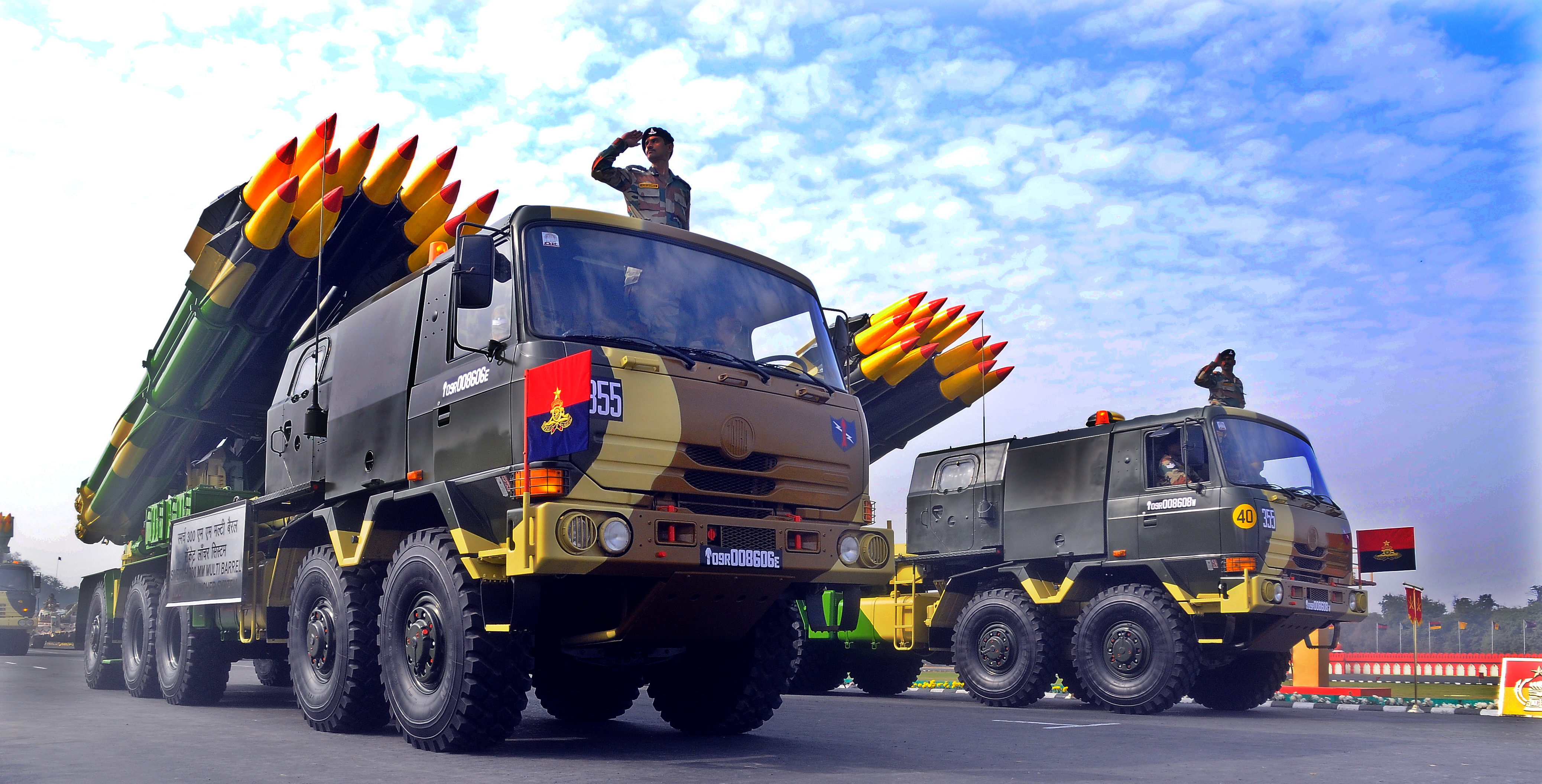 * 9A52 – Standard variant on
* 9A52 – Standard variant on

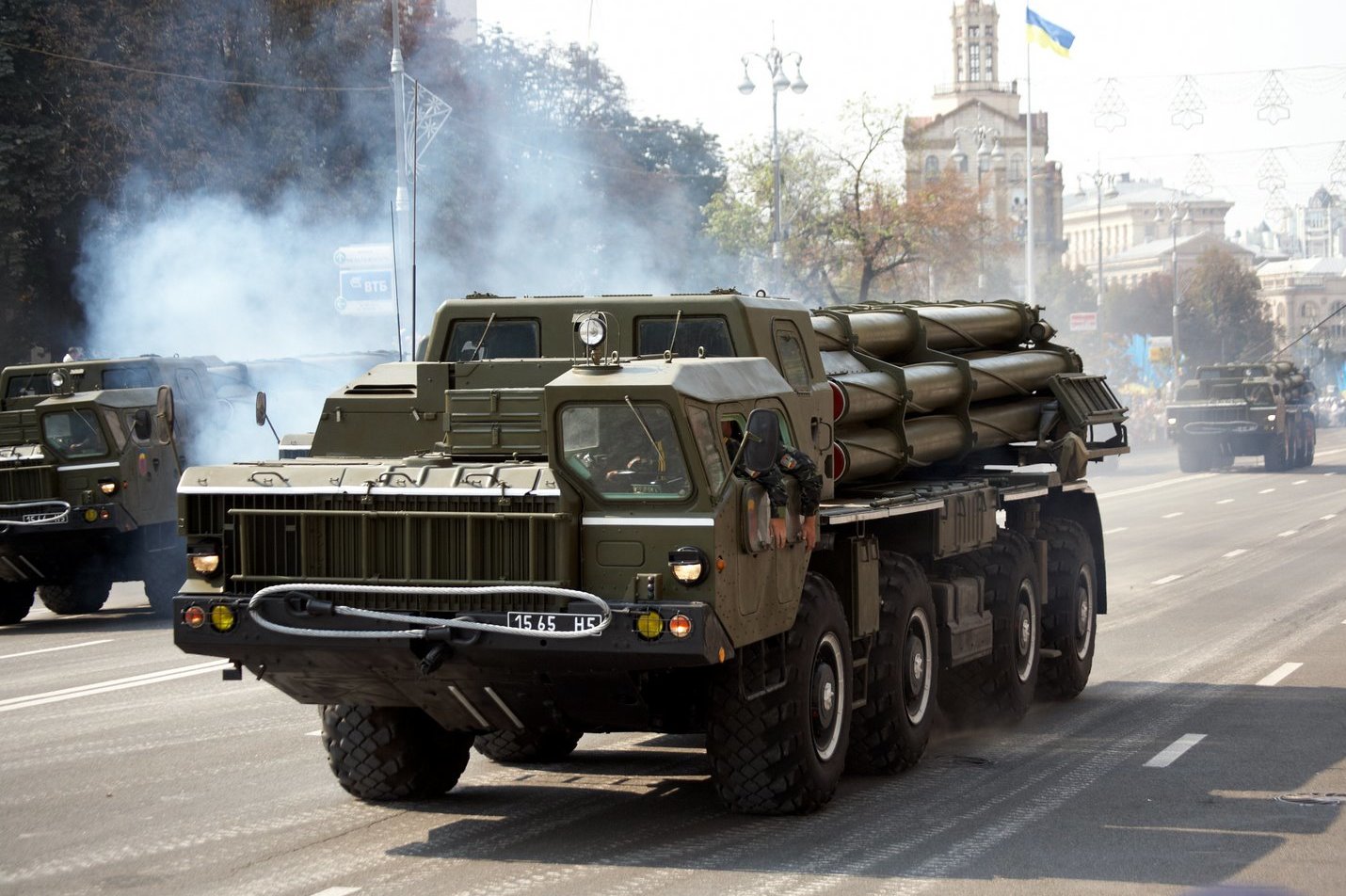

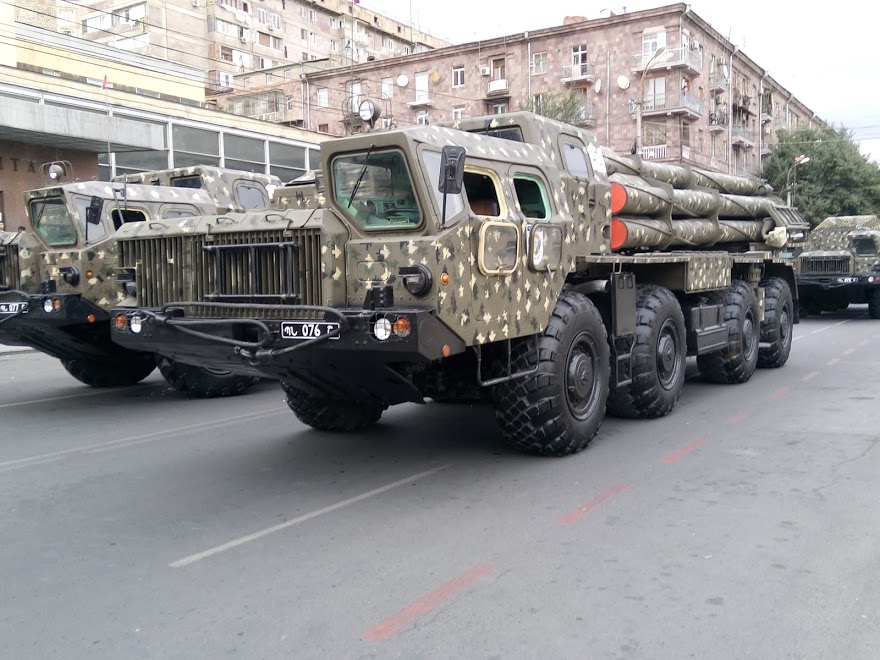
 * A-100 – A 300 mm, 10-tube multiple rocket launcher developed by the
* A-100 – A 300 mm, 10-tube multiple rocket launcher developed by the
 *
*
Smerch – 9A52 – 300mm multi-barreled rocket launcher – Walk around photos
Splav State Research and Production Enterprise
{{DEFAULTSORT:Bm-30 Smerch Wheeled self-propelled rocket launchers Cold War artillery of the Soviet Union Self-propelled artillery of Russia Multiple rocket launchers of the Soviet Union NPO Splav products Modern thermobaric weapons of Russia Cluster munition Military vehicles introduced in the 1980s
General characteristics
* Chassis: MAZ-543M orMAZ-79111
The MAZ-543/MAZ-7310 "Uragan" (russian: МАЗ-543/МАЗ-7310 "Ураган"/Hurricane) is a Soviet/Belarusian 8×8 artillery truck designed and developed by MAZ (Minsk Automobile Plant), in what is now Belarus.
MAZ-543
Designed in the 1960s ...
* Emplacement Time: 3 min
* Displacement Time: 2 min
* Launch Rate
: Salvo Time: 12 rounds in 38 seconds
* Reload Time: 20 min
Variants
 * 9A52 – Standard variant on
* 9A52 – Standard variant on MAZ-79111
The MAZ-543/MAZ-7310 "Uragan" (russian: МАЗ-543/МАЗ-7310 "Ураган"/Hurricane) is a Soviet/Belarusian 8×8 artillery truck designed and developed by MAZ (Minsk Automobile Plant), in what is now Belarus.
MAZ-543
Designed in the 1960s ...
truck.
* 9A52-2 – Modified variant on MAZ-543M truck.
* 9A52-2T – Export version, based on the Tatra T816
The Tatra T816 is a truck family, produced by Czech company Tatra. It uses the traditional tatra concept of rigid backbone tube and swinging half-axles giving independent suspension. The vehicles are available in 4x4, 6x6, 8x8, 10x8, 10x10, 12 ...
10×10 truck.
* 9A52-4 – Lighter, airmobile version on KamAZ-6350 truck with modular 6-round rocket pack. Demonstrated in 2007.
* Arctic version with rockets mounted on DT-30PM tracked vehicle.
Rocket projectiles
Operators




Current operators
* – 50 systems in 1999. * – 6 systems. Received more as of 2018. * – 40 systems. * – 48 systems in 1990. * – Locally produced as thePHL-03
The PHL-03 is a truck-mounted self-propelled 12-tube 300 mm long-range multiple rocket launcher of the People's Republic of China.
The system is beginning to be replaced by the more modular and newer PHL-16.
Design
The design is based o ...
.
* – Total 81 9A52-2T systems in service. The launchers for the Indian Army's 9K58 Smerch 300 mm multiple launch (MLR) systems are mounted on Indian made T816 KOLOS TATRA, making it roughly 162 batteries of 3 launchers each with 3 as reserve launchers. Which makes it a total of 972 launchers in service. Each launcher has been provided with its own ammunition replenishment vehicle based on the same T816. Since 2012 India's state-owned Ordnance Factory Board
Ordnance Factory Board (OFB), consisting of the Indian Ordnance Factories, now known as Directorate of Ordnance (Coordination & Services) was an organisation, under the Department of Defence Production (DDP) of Ministry of Defence (MoD), Gove ...
has produced several rocket variants for the system that have a strike range of 70 or 90 km.
*
* – 27 systems in 1996.
* – 36 systems PHL03/AR2 Chinese version.
* – 36 units, more produced locally as the A-100E with complete TOT, based on the Chinese A-100,
* – 106. More in production (in 2020).
* – Unknown number, used in the Syrian civil war.
* – 6 systems 9A52-2T in 2008/2009.
* – 80 as of 2014.
* – 6 systems.
* – 12 systems.
Former operators
* : Passed on to successor states. * – 0 systems in 2016.Similar systems
* – Visually similar missile based on the Wanshan WS-2400 8x8 cross country truck. However, the PHL-03 and BM-30 do not share interchangeable parts, so they are distinct missiles despite their similar appearance. The Chinese vehicle utilizes a German-designed diesel engine, transmission and hydraulics, manufactured by Wanshan in China, following a technology transfer fromZF Friedrichshafen
ZF Friedrichshafen AG, also known as ZF Group, originally ''Zahnradfabrik Friedrichshafen'', and commonly abbreviated to ZF (ZF = "Zahnradfabrik" = "Cogwheel Factory"), is a German car parts maker headquartered in Friedrichshafen, in the south- ...
. The program actually begun in the late 1990s, with the '96' in the designation reportedly meaning 1996, the year that the Chinese military first issued the requirement for a new long range SPMRLS. The program went through major redesign changes when the BM-30 Smerch was purchased. Although dubbed by many Chinese as a guided self-propelled multiple rocket launching system (SPMRLS), the PHL96 is not strictly speaking a guided SPMRLS because, technically, none of rockets are guided – the guidance is actually achieved via the sub-munitions, such as the 9M55K1 cluster munition. Only a very limited number of the PHL96 entered Chinese service because its successor, the PHL03, entered service shortly after.
 * A-100 – A 300 mm, 10-tube multiple rocket launcher developed by the
* A-100 – A 300 mm, 10-tube multiple rocket launcher developed by the Beijing
}
Beijing ( ; ; ), alternatively romanized as Peking ( ), is the capital of the People's Republic of China. It is the center of power and development of the country. Beijing is the world's most populous national capital city, with over 21 ...
-based China Academy of Launch Vehicle Technology
The China Academy of Launch Vehicle Technology (CALT) is a major state-owned civilian and military space launch vehicle manufacturer in China and one of the major launch service providers in the world. CALT is a subsidiary of the larger China Ae ...
(CALT) in the late 1990s. The A-100 has a minimum firing range of 40 km & a maximum firing range of 100 km.
* PHL-03
The PHL-03 is a truck-mounted self-propelled 12-tube 300 mm long-range multiple rocket launcher of the People's Republic of China.
The system is beginning to be replaced by the more modular and newer PHL-16.
Design
The design is based o ...
– Chinese development of the PHL96 with 150 km range. The PHL03 is a highly digitized PHL96 with a computerized fire control system (FCS) incorporating GPS/GLONASS, similar to that of the Type 90A SPMRL, with a four-man crew (compared with three for the BM-30/PHL96), which entered service around 2004–2005, only a year or two after its predecessor, the PHL96. As with the PHL96, the PHL03 is not exactly a guided SPMRL because it is the submunitions that are guided, not the rockets themselves.
* – Chinese development of the PHL03. This is actually the first model of the Chinese versions of the BM-30 SPMRL that is a truly a guided rocket system, in that the rockets themselves are guided by the simple primitive cascade inertial terminal guidance used on the WS series SPMRL, which became standard for later Chinese versions. Russia had already developed a guided version of the BM-30 with mid-course radio command guidance to immediately correct the error in the flight of the rocket once detected by the ballistic tracking radar, but this was not adopted due to financial constraints.
* – Chinese development of the AR-1. A 10-round version of the AR-1, with two launching boxes, each containing five expandable launching tubes. Once rockets are launched, the entire launch box is replaced, instead of individually reloading each tube as in earlier versions, thus greatly reducing the reload time.
* A-100E – Export variant of the AR-1A. In service with the Pakistan Army
The Pakistan Army (, ) is the Army, land service branch of the Pakistan Armed Forces. The roots of its modern existence trace back to the British Indian Army that ceased to exist following the partition of India, Partition of British India, wh ...
.
* AR-2 – Chinese development of the AR-1/1A manufactured by Norinco
China North Industries Group Corporation Limited, doing business internationally as Norinco Group (North Industries Corporation), and known within China as China Ordnance Industries Group Corporation Limited (), is a Chinese state-owned defense ...
, with range increased to 130 km.
* AR-3
Arkansas's 3rd congressional district is a congressional district in the U.S. state of Arkansas. The district covers Northwest Arkansas and takes in Fort Smith, Fayetteville, Springdale, and Bentonville.
The district is represented by Repub ...
– Chinese system manufactured by Norinco launching 300 mm or 370 mm rockets
* Vilkha
Vilkha ( uk, «Вільха», "Alder tree") is a Ukrainian heavy multiple rocket launcher that fires guided missiles. Designed by the Luch Design Bureau, it was based on the BM-30 Smerch rocket launch system and developed in the 2010s. Vilkha e ...
- A Ukrainian development of the Smerch system that entered service in 2018 with the Ukrainian Rocket Forces.
See also
 *
* Astros II MLRS
Astros II (Artillery Saturation Rocket System) is a self-propelled multiple rocket launcher produced in Brazil by the Avibras company. It features modular design and employs rockets with calibers ranging from 127 to 450 mm (5–17.72 inche ...
* BM-24
The BM-24 is a multiple rocket launcher designed in the Soviet Union. It is capable of launching 240mm rockets from 12 launch tubes. Versions of the BM-24 have been mounted on the ZIS-151 6×6 Truck chassis and the AT-S tracked artillery tra ...
240 mm multiple rocket launcher
* BM-27 Uragan
The BM-27 Uragan (russian: БМ-27 Ураган, lit=Hurricane; GRAU index 9P140) is a self-propelled 220 mm multiple rocket launcher designed in the Soviet Union. The system began its service with the Soviet Army in the late 1970s, and wa ...
220 mm multiple rocket launcher
* Fajr-5 333 mm rocket launcher
* HIMARS, U.S. multiple rocket launcher
* Katyusha BM-13 multiple rocket launchers of World War II
* M270
The M270 Multiple Launch Rocket System (M270 MLRS) is an American-developed armored, self-propelled, multiple rocket launcher.
The U.S. Army variant of the MLRS vehicle is based on the chassis of the Bradley Fighting Vehicle. The first M270s we ...
, U.S. multiple rocket launcher
* Pinaka Multi Barrel Rocket Launcher
Pinaka (from Sanskrit: पिनाक, see Pinaka) is a multiple rocket launcher produced in India and developed by the Defence Research and Development Organisation (DRDO) for the Indian Army. The system has a maximum range of 40 km ...
, 214 mm Indian multiple rocket launcher
* TOROS
Toros may refer to:
Sports
*Rio Grande Valley FC Toros, an American soccer team in Edinburg, Texas
* Austin Toros (2005-2014) a minor league basketball team from Austin, Texas
*Western District Toros, a soccer club from Adelaide, South Australia
...
230–260 mm rocket launcher
* TOS-1 Buratino Heavy Flame Thrower System (multiple rocket / thermobaric weapon launcher)
* Vilkha
Vilkha ( uk, «Вільха», "Alder tree") is a Ukrainian heavy multiple rocket launcher that fires guided missiles. Designed by the Luch Design Bureau, it was based on the BM-30 Smerch rocket launch system and developed in the 2010s. Vilkha e ...
300 mm Ukrainian multiple rocket launcher
References
* ''Russia's Arms Catalog 2004''Bibliography
* Jamie Prenatt and Adam Hook, ''Katyusha – Russian Multiple Rocket Launchers 1941–Present'', New Vanguard 235, Osprey Publishing Ltd, Oxford 2016.External links
Smerch – 9A52 – 300mm multi-barreled rocket launcher – Walk around photos
Splav State Research and Production Enterprise
{{DEFAULTSORT:Bm-30 Smerch Wheeled self-propelled rocket launchers Cold War artillery of the Soviet Union Self-propelled artillery of Russia Multiple rocket launchers of the Soviet Union NPO Splav products Modern thermobaric weapons of Russia Cluster munition Military vehicles introduced in the 1980s